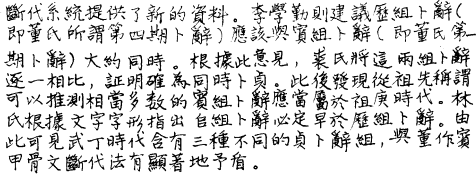Published online by Cambridge University Press: 26 March 2015
The contribution of Qiu Xigui and Lin Yun to the debate over the proper dating of the Diviner Li-group inscriptions require a fundamental revision in oracle-bone periodization methodology. Starting with a review of Dong Zuobin's reasons for placing the Li-group inscriptions in his period IV, this article proceeds to consider the new information provided by the Xiaotun nandi oracle-bone inscriptions excavated in 1973 and by the discovery of the Fu Hao tomb in 1975. Li Xueqin's reason for dating the Diviner Li-group inscriptions as roughly contemporary with those of the Diviner Bin-group are summarized, followed by an account of the fuller discussions of Qiu and Lin. Qiu focuses in particular on the significant identity of personal names and specific events recorded in both inscription groups. The use of differing ancestral titles permits the division of the Li- and Bin-group inscriptions into different chronological segments and reveals that a significant percentage of the Diviner Bin-group inscriptions should be dated to the reign of Zu Geng. Lin's epigraphic approach allows him to conclude that the Diviner Dui-group inscriptions are earlier than those of the Diviner Li-group; hence the Dui-group must also precede the Bin-group. The presence of different diviner groups operating contemporaneously and for only portions of a king's reign leads to the conclusion that Dong Zuobin's periodization categories are now too vague. They should be replaced by the more precise categorization of diviner groups.

